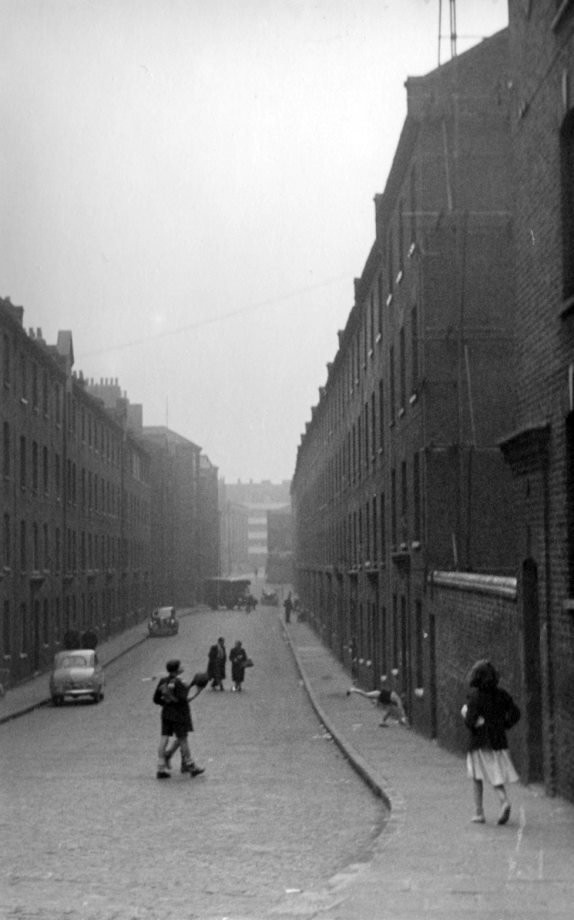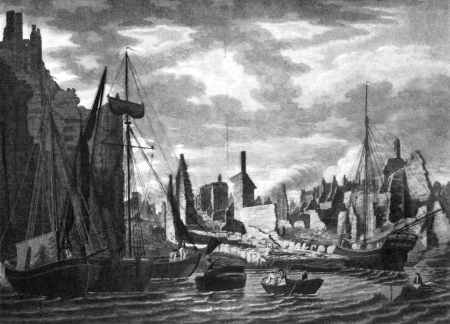
George Tavern
 | George Tavern |
| HOME | · | ARTICLE | · | MARKERS OFF | · | STREETS | · | BLOG | · | CONTACT US |
| MAP YEAR: | 1750 | 1800 | 1810 | 1820 | 1830 | 1860 | 1900 | 1950 | 2024 | |
| Use the control in the top right of the map above to view this area on another historic map | ||||||||||
| Main source: | Wikipedia |
| Further citations and sources |
| Click here to explore another London street We now have 668 completed street histories and 46832 partial histories Find streets or residential blocks within the M25 by clicking STREETS |
| CONTRIBUTIONS TO THE LOCALITY |
  Tricia Added: 27 Apr 2021 12:05 GMT | St George in the East Church This Church was opened in 1729, designed by Hawksmore. Inside destroyed by incendrie bomb 16th April 1941. Rebuilt inside and finished in 1964. The building remained open most of the time in a temporary prefab. Reply |
  Beverly Sand Added: 3 Apr 2021 17:19 GMT | Havering Street, E1 My mother was born at 48 Havering Street. That house no longer exists. It disappeared from the map by 1950. Family name Schneider, mother Ray and father Joe. Joe’s parents lived just up the road at 311 Cable Street Reply |
  Mike Levy Added: 19 Sep 2023 18:10 GMT | Bombing of Arbour Square in the Blitz On the night of September 7, 1940. Hyman Lubosky (age 35), his wife Fay (or Fanny)(age 32) and their son Martin (age 17 months) died at 11 Arbour Square. They are buried together in Rainham Jewish Cemetery. Their grave stones read: "Killed by enemy action" Reply |
| LATEST LONDON-WIDE CONTRIBUTIONS TO THE PROJECT |
  Charles Black Added: 24 May 2024 12:54 GMT | Middle Row, W10 Middle Row was notable for its bus garage, home of the number 7. Reply |
  Added: 2 May 2024 16:14 GMT | Farm Place, W8 The previous name of Farm Place was Ernest St (no A) Reply |
  Tony Whipple Added: 16 Apr 2024 21:35 GMT | Frank Whipple Place, E14 Frank was my great-uncle, I’d often be ’babysat’ by Peggy while Nan and Dad went to the pub. Peggy was a marvel, so full of life. My Dad and Frank didn’t agree on most politics but everyone in the family is proud of him. A genuinely nice, knowledgable bloke. One of a kind. Reply |
  Theresa Penney Added: 16 Apr 2024 18:08 GMT | 1 Whites Row My 2 x great grandparents and his family lived here according to the 1841 census. They were Dutch Ashkenazi Jews born in Amsterdam at the beginning of the 19th century but all their children were born in Spitalfields. Reply |
  Wendy Added: 22 Mar 2024 15:33 GMT | Polygon Buildings Following the demolition of the Polygon, and prior to the construction of Oakshott Court in 1974, 4 tenement type blocks of flats were built on the site at Clarendon Sq/Phoenix Rd called Polygon Buildings. These were primarily for people working for the Midland Railway and subsequently British Rail. My family lived for 5 years in Block C in the 1950s. It seems that very few photos exist of these buildings. Reply |
  Steve Added: 19 Mar 2024 08:42 GMT | Road construction and houses completed New Charleville Circus road layout shown on Stanford’s Library Map Of London And Its Suburbs 1879 with access via West Hill only. Plans showing street numbering were recorded in 1888 so we can concluded the houses in Charleville Circus were built by this date. Source: Charleville Circus, Sydenham, London Reply |
  Steve Added: 19 Mar 2024 08:04 GMT | Charleville Circus, Sydenham: One Place Study (OPS) One Place Study’s (OPS) are a recent innovation to research and record historical facts/events/people focused on a single place �’ building, street, town etc. I have created an open access OPS of Charleville Circus on WikiTree that has over a million members across the globe working on a single family tree for everyone to enjoy, for free, forever. Source: Charleville Circus, Sydenham, London Reply |
  Charles Added: 8 Mar 2024 20:45 GMT | My House I want to know who lived in my house in the 1860’s. Reply |
| LOCAL PHOTOS |









